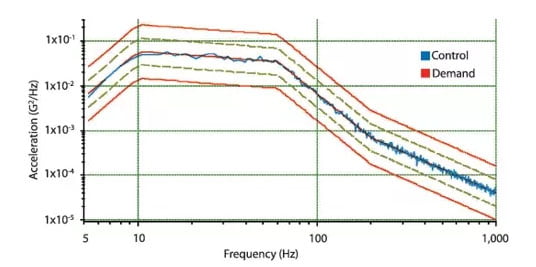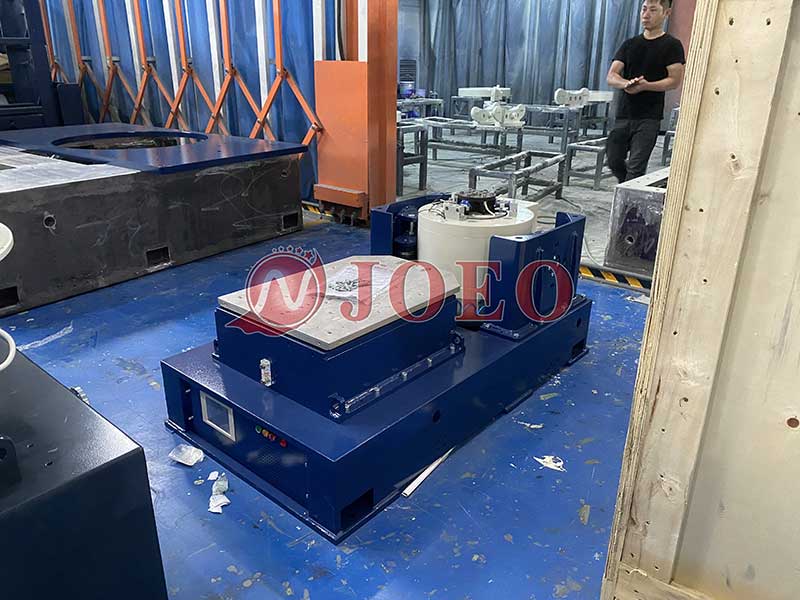Before many companies start the purchase of vibration testing shaker table projects, the relevant person in charge usually makes an inquiry to the market according to the technical parameters provided by the technical department or the research and development department. However, many people do not have a deep understanding of the vibration testing shaker table, do not know its classification and difference, and do not know how to select the type, which leads to the procurement process, may choose unsuitable equipment, thereby affecting the experimental results, wasting money and time, and may even cause project delays. Below, Xiaobian will explain the structure, classification and selection of the vibration testing shaker table. Hope to be helpful to everyone!
According to the form of its energy acquisition, it is divided into electrodynamic vibration shaker, mechanical vibration test table and hydraulic shaker.
According to the simulated equivalent vibration conditions, it can be divided into sine vibration table and random vibration test system.
According to the axial force of vibration, it is divided into unidirectional vibration test bench and multi-directional vibration test table.
Commonly used vibration testing shaker table are mechanical vibration test table, hydraulic shaker, electrodynamic vibration shaker.
Features: Powerful thrust, accurate data waveform, adjustable amplitude, support frequency range of 5-5000Hz, maximum acceleration up to 100G. Its working performance is stable and reliable, easy to operate and maintain, can run continuously for a long time, and the magnetic leakage of the table is small. The equipment adopts modern advanced technologies and special processes such as “double magnetic circuit structure”, “self-generated skeleton moving coil”, “linear bearing and roller guidance” and “trunnion vibration isolation”, which can respectively carry out triaxial sinusoidal vibration and broadband random vibration tests, while supporting classical shock tests (including half-sine, trapezoidal and post-peak saw) and shock response spectrum tests. The equipment can be configured with climate chamber to complete the multi-environment comprehensive test of mechanics and climate, and can make air cooling, water cooling and their standard shaking table. In addition, all equipment comply with GB/T13310-1991, GB2423.10-1995, JJG190-1997, JJG948-1999, IEC68-2-64 (FC), GJB150-86, GJB360 and IEC68-2-64 (FH) standards. At present, the equipment has been widely used in high-demand industries such as aerospace, electronic appliances, ships, weapons and traffic locomotives.
Features: large thrust, poor waveform, low price, suitable for low frequency (5hz-80hz) fatigue test. The frequency range of the mechanical vibration test bench is generally 5-80hz. The maximum load is the main specification. The maximum displacement is generally ±3-5mm. The maximum acceleration is generally 10g. Table size is large. Generally, horizontal vibration can be done without horizontal sliding table. It is noisy and can not be used for random vibration. Commonly used in electronic, electrical, optical instruments and other products of the whole machine vibration test.
Features: low frequency (ultra-low frequency), powerful thrust and load capacity, convenient control mode, but its upper limit of working frequency is low, usually between tens of Hz and hundreds of Hz. The main specification of the hydraulic vibration test bench is the output exciting force, and the frequency range is generally 1-200Hz. The maximum displacement is usually ±100-200mm, and the maximum acceleration can reach 10g. The horizontal vibration test can be carried out by equipping the horizontal slide table. Random vibration measurement can be realized by means of stochastic controller. The equipment is noisy and the operating cost and price are relatively high. It is usually used for vehicle vibration test and seismic simulation vibration test of construction and water conservancy projects.
The selection of the most basic formula: f=ma
1, The thrust (f) unit is cattle (N)
Thrust is generally the maximum thrust of the vibration test table, usually said how many tons of shaking table, or how many kilograms of the table. The unit of thrust is Newton (N), and the unit of force converted into a mass unit is tons or kilograms, such as a nominal 80KN shaking table is usually called an 8-ton table.
2.The unit of mass (m) is KG, and the mass is divided into the following possible parts
(1) Quality of sample m1
(2) The quality of the fixture m2
(3) The quality of the connection head (generally required to be included in the horizontal test) m3
(4) The quality of the extended table (the quality of the horizontal slide table or the vertical expansion table) m4
(5) The mass of the moving coil (which is basically a constant value) m5
3.Maximum acceleration required for the test (a) unit: m/s^2 or g
Conversion relation: 10*m/s^2=g
Root mean square value of acceleration in random vibration (Grms unit: g)
The Grms is derived from the ASD or PSD through complex calculations.

Power spectral density (PSD unit: g^2/Hz)
Acceleration spectral density (ASD unit: (m/s^2)^2/Hz)
The conversion relationship between the two: 1 g^2/Hz=(9.8 m/s^2)^2/Hz=96.04 m^2/s^3
4.Displacement, unit mm
The general vibration test table will be nominal, such as: maximum displacement (p-p) : 76mm, as long as it does not exceed this.
5, Frequency range, although the frequency of the general electrodynamic vibration shaker nominal frequency range: 2~2700Hz, but the actual general operating frequency in the range of 5~2500Hz, if less than 5Hz or higher than 2500Hz it may not be able to do.
According to experience: the vibration test conditions given by customers can generally be given more is the sample mass (weight), maximum acceleration value or Grms value ASD or PSD. In this way, we can calculate whether the existing equipment can meet the relevant conditions, and also consider the case of instantaneous overload, which is usually 0.8.
Therefore, f=ma must be refined to: f=(m1+m2+m3+m4+m5+…) A / 0.8
The customer gives the conditions: 1kg sample, plus the fixture will not exceed 5kg, the maximum acceleration will be 30g, ask whether the 8-ton thrust shaker can meet the X, Y, Z three-way vibration test table?
Confirm the above formula one by one (provisional assumption of the time equality of the data listed) :
m1=1kg (sample)
m2=4kg (fixture)
m3=15kg(connection head, horizontal direction should be included)
m40=50kg(Vertical expansion table)
m41=300kg(horizontal table)
m5=60kg (moving coil)
The X and Y directions are generally defined as horizontal directions, and the Z directions are defined as vertical directions.
Horizontal calculation verification:
F=(m1+m2+m3+m41+m5+..) a/0.8=(1+4+15+300+60)*30/0.8=14250kg=142500N>80000N The value is greater than 8 tons of thrust, so it cannot be met
Vertical calculation verification:
F=(m1+m2+m40+m5+.)a/0.8=(1+4+50+60)*30/0.8=4312.5kg=43125N<80000N
This value is less than 8 tons of thrust, so it can meet the test.
If you want to know more about the product knowledge of vibration testing shaker table, please feel free to contact our sales engineers. They will provide you with professional advice and support to help you choose the equipment that best suits your needs and ensure your project runs smoothly. We look forward to working with you!
